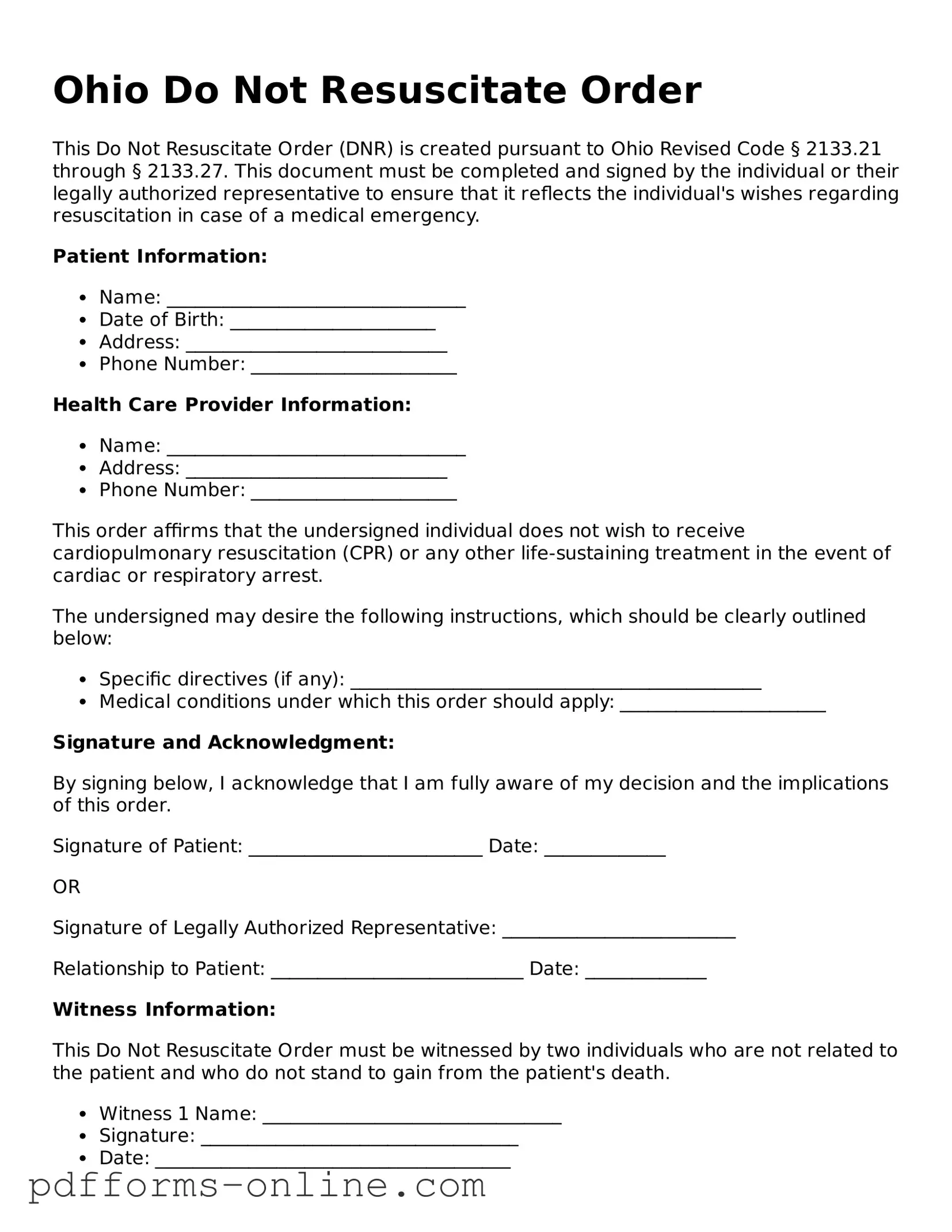Ohio Do Not Resuscitate Order
This Do Not Resuscitate Order (DNR) is created pursuant to Ohio Revised Code § 2133.21 through § 2133.27. This document must be completed and signed by the individual or their legally authorized representative to ensure that it reflects the individual's wishes regarding resuscitation in case of a medical emergency.
Patient Information:
- Name: ________________________________
- Date of Birth: ______________________
- Address: ____________________________
- Phone Number: ______________________
Health Care Provider Information:
- Name: ________________________________
- Address: ____________________________
- Phone Number: ______________________
This order affirms that the undersigned individual does not wish to receive cardiopulmonary resuscitation (CPR) or any other life-sustaining treatment in the event of cardiac or respiratory arrest.
The undersigned may desire the following instructions, which should be clearly outlined below:
- Specific directives (if any): ____________________________________________
- Medical conditions under which this order should apply: ______________________
Signature and Acknowledgment:
By signing below, I acknowledge that I am fully aware of my decision and the implications of this order.
Signature of Patient: _________________________ Date: _____________
OR
Signature of Legally Authorized Representative: _________________________
Relationship to Patient: ___________________________ Date: _____________
Witness Information:
This Do Not Resuscitate Order must be witnessed by two individuals who are not related to the patient and who do not stand to gain from the patient's death.
- Witness 1 Name: ________________________________
- Signature: __________________________________
- Date: ______________________________________
- Witness 2 Name: ________________________________
- Signature: __________________________________
- Date: ______________________________________
It is advisable that copies of this order be shared with all healthcare providers and kept in accessible locations to ensure compliance with the patient's wishes.
